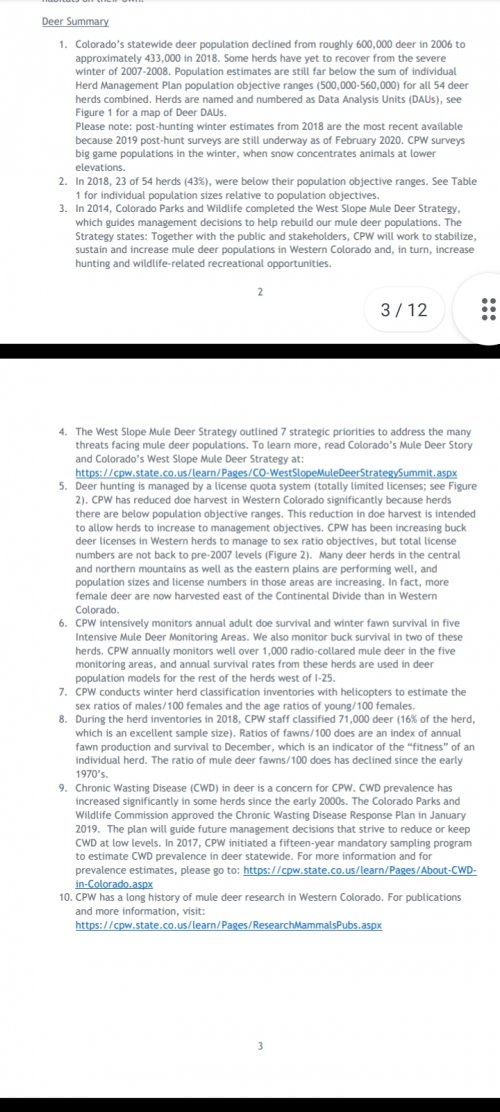Believe me or not but I’ve tried several times to search HT knowing that it’s had to have been discussed previously. I get this message that says Oops! we ran into some problems. A server error occurred, try again later. Like I mentioned, I too have been doing research on it.I’ve posted tons of links to research on the forum over the years on this subject that could get turned up with the search function, so I’m not going to dig it all up again. But yes, population declines in the 40-60% range have been observed in some herds with long-term infection. Mule deer, white-tails, and elk. So does it have the capacity to have population level effects? Yes.
I’m intrigued by what I’ve learned so far and as most research does, it’s produced additional questions along with the information learned. It’s interesting how different states have chosen to deal with this so far.
Some states like Illinois have upped harvest in an attempt to “flatten the curve” and others have just monitored the situation and are conducting tests.
Norway chose to eliminate entire localized populations. Not saying one is better than the other. The science hasn’t shown a preferred method yet.
I do wonder about different management scenarios. Like letting it run it’s course for example. It seems that Colorado has just been observing it and still been able to manage deer and elk numbers successfully. Could this indicate that it’ll self regulate????
Perhaps herd reductions are necessary and will prove to be helpful. I can’t help but wonder about unintended consequences that could happen if this was the adopted method. Not being suspicious of intentions or a hoax here, just thinking of scenarios.
What happens if we let it play out? Massive die off? Not much change? No change? If we reduce numbers preemptively? No slow down in spread? Effective reduction in cases?
One thing that I find interesting is in the cases where entire deer farms have been tested and shown to be free of CWD and were strictly monitored. Somehow it still was able to become present.
There’s a lot of concentrated effort on this right now and I’m hopeful it turns out data we can use to curb this.
Wisconsin has said that the biggest risk of spread comes from younger age class bucks and is encouraging harvest of them. Looks like Montana is ahead of the game by whackin all those young muleys. Proactive! LOL








